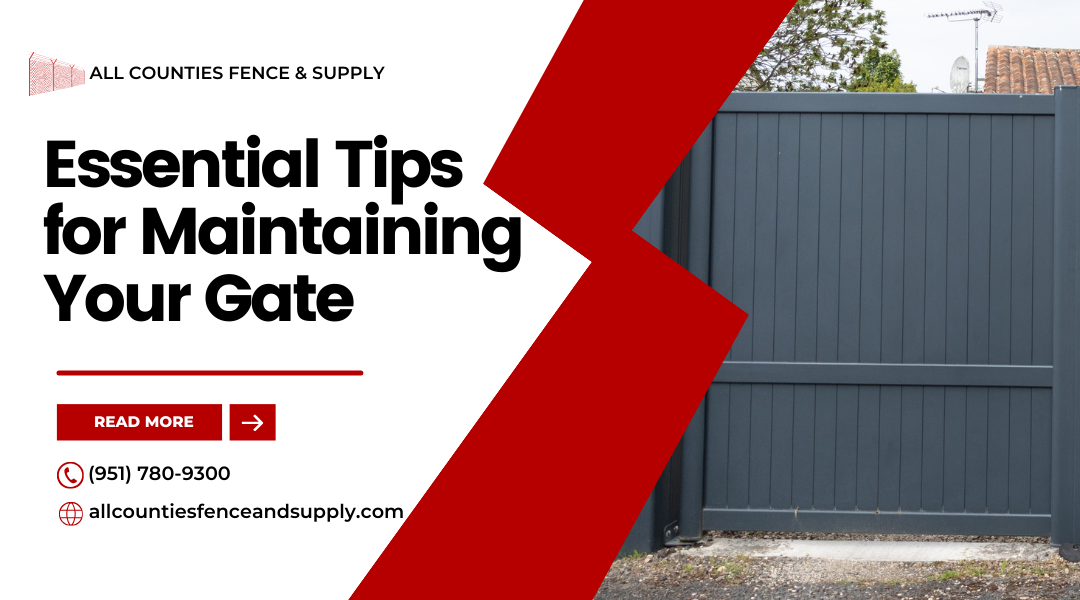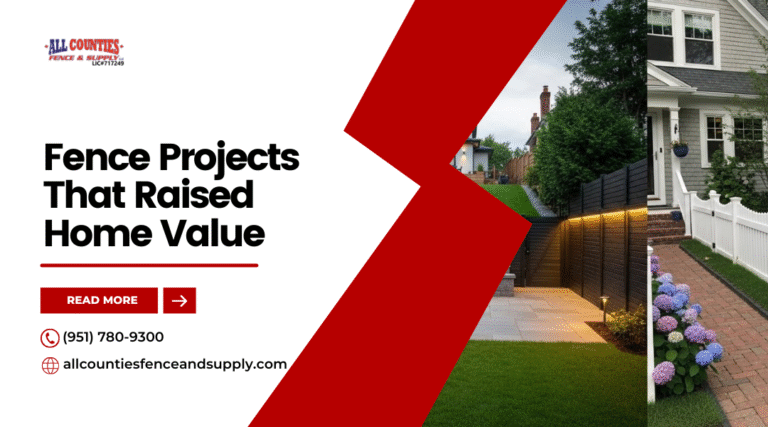Maintaining a gate is essential for both security and aesthetics. Regular checks and repairs can prolong the lifespan of your gate and ensure it functions properly. This blog post will provide you with top tips to keep your gate in great shape, helping you avoid costly repairs in the future.
Whether you have a wooden, vinyl, or metal gate, different materials require specific maintenance methods. Understanding the needs of your gate can make a significant difference in its durability. You’ll learn how to identify common issues, such as rust or hinge problems, and how to address them effectively.
By following these practical tips, you can enhance the appearance and functionality of your gate. You’ll also discover how to perform simple repairs and when to call a professional. Let’s dive into the best practices for gate repair and maintenance that will keep your property safe and looking its best.
Why Gate Maintenance Is Crucial For Your Property
Maintaining your gate is essential for several reasons, focusing primarily on security and aesthetics. A well-cared-for gate not only protects your property but also enhances its overall appearance.
Enhance Security And Privacy With A Well-Maintained Gate
A secure gate is your first line of defense against unauthorized access. Regular maintenance ensures that locks and hinges function correctly, preventing easy break-ins.
Consider a few tips for enhancing your gate’s security:
- Inspect locks regularly: Make sure they are not rusted or worn out.
- Lubricate hinges: This prevents squeaking and ensures smooth operation.
- Check for damage: Look for any weaknesses or gaps that could be exploited.
A sturdy, well-maintained gate can deter potential intruders, giving you peace of mind. Additionally, privacy is heightened when your gates are in good shape, as they provide a clear boundary that enhances your security fence.
The Impact Of A Damaged Gate On Your Curb Appeal
A damaged or neglected gate can significantly reduce your property’s curb appeal. If your gate appears broken or unkempt, it sends the message that your property is not well cared for.
Pay attention to these factors:
- Visual attraction: A fresh coat of paint or minor repairs can revitalize your gate.
- Material integrity: Wooden gates can rot or warp, while metal gates may rust. Regular check-ups help prevent these issues.
- Landscaping harmony: Your gate should complement your landscaping and fencing. A dilapidated gate disrupts this aesthetic.
Investing time in gate maintenance not only protects your property but also enhances its visual charm. This small effort can positively affect the overall impression of your home.
Common Gate Issues And How To Identify Them
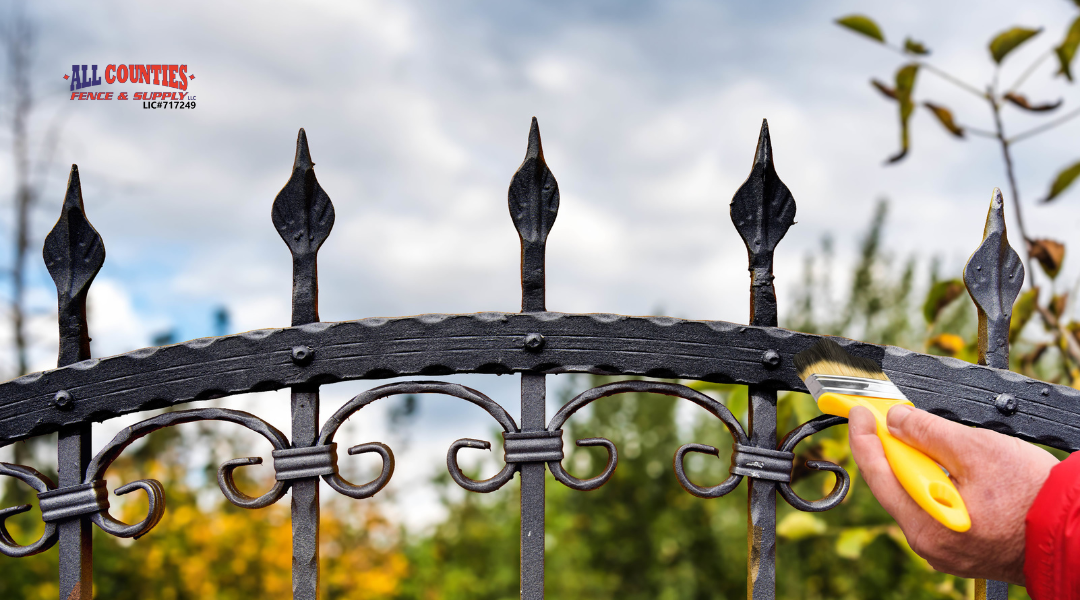
Your gate can face several common issues that affect its function and appearance. Recognizing these problems early will help you maintain your gate effectively.
Sagging Or Misaligned Gates
Sagging gates usually happen due to weak or damaged supports, improper installation, or age. When you notice your gate is not hanging straight, check if it is lower on one side or if the latch doesn’t line up with the post.
To fix this, you can adjust the hinges or tighten the screws. If the gate continues to sag, inspect the surrounding area for any structural problems that may cause the misalignment. Sometimes, adding a support brace can help rectify the sagging issue.
Pay attention to any resistance when opening or closing, as this can indicate misalignment that needs prompt attention.
Rust And Corrosion In Metal Gates
Metal gates are prone to rust and corrosion, especially in damp or coastal areas. Look for flaky patches, reddish spots, or any bubbling on the surface. These are signs of rust starting to form.
To address this, start by removing loose rust with sandpaper or a wire brush. After cleaning the area, apply a corrosion-resistant primer and paint suitable for metal surfaces. Regularly inspect your gate for early signs of damage to prevent further deterioration.
A good coat of paint not only improves appearance but also acts as a protective layer against moisture.
Broken Or Loose Hinges
Broken or loose hinges can hinder your gate’s operation, making it hard to open or close. If you notice the gate swinging awkwardly or if there are visible fractures in the hinge, immediate action is required.
Check if the screws are tightly fastened. If they are loose, simply tighten them with a screwdriver. For broken hinges, you may need to replace the entire hinge.
Ensure the hinges are of good quality and appropriate for your gate’s weight to prevent future issues. Regular maintenance of hinges will extend the life of your gate significantly.
Step-By-Step Guide To Repairing Your Gate
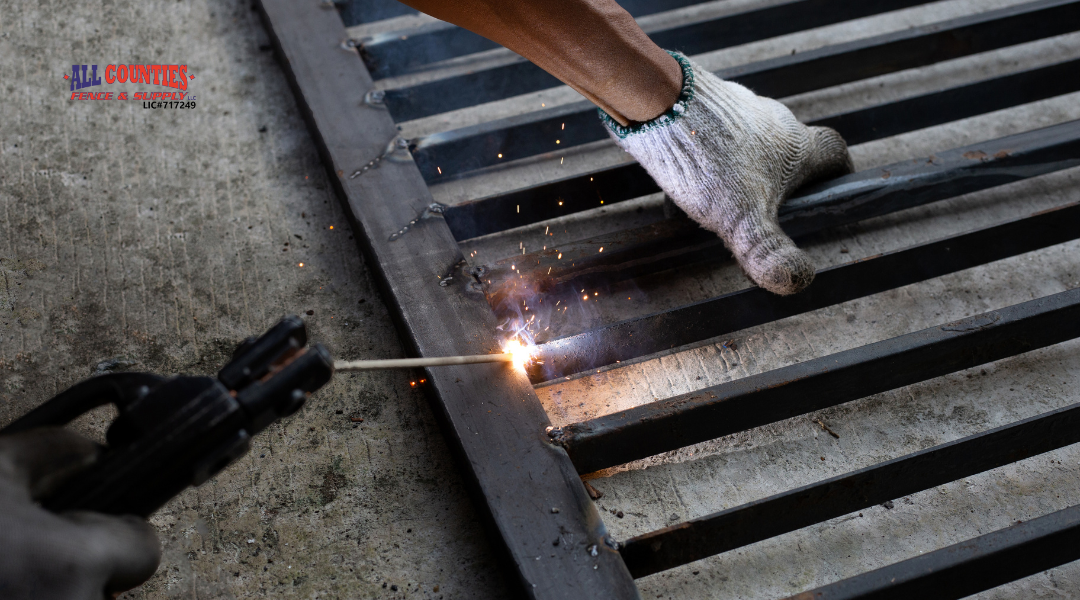
Maintaining your gate is key to ensuring its longevity and proper function. By following these step-by-step instructions, you will be able to efficiently address common issues like damage, loose hinges, and rusty parts.
Inspect The Gate For Damage
Start by examining your gate for any visible damage. Look for cracks, dents, or signs of wear. Pay special attention to the frame and panels, as these can weaken over time.
You should also check the gate motor if your gate is automatic. Look for any signs of remote control malfunction, which can prevent the gate from opening.
To troubleshoot, try manually opening the gate. If it sticks or won’t open fully, this could indicate alignment issues or damaged components. Take notes on any problems you find to make repairs easier.
Tightening Hinges And Adjusting Alignment
Loose hinges are a common issue that can cause your gate to sag or not open correctly. Use a wrench to tighten any loose screws or bolts on the hinges. This should help improve the gate’s stability.
After tightening, check the alignment. The gate should close smoothly without gaps. If it is misaligned, adjust the hinges by repositioning them or adding shims.
To test the alignment, stand back and visually assess it from both sides. Make sure it is level before proceeding. Properly aligned hinges will extend the lifespan of your gate and enhance its security.
Repairing Or Replacing Damaged Panels
If you find cracked or damaged panels, repairs may be needed. For minor cracks, use wood filler or epoxy to fill in gaps. Allow it to dry completely before sanding it smooth.
For more significant damage, replacing the panels may be necessary. Remove the damaged panels carefully and measure the space for new ones. Select materials that match your existing gate for a cohesive look.
Once the new panels are in place, secure them firmly. Check for gaps and ensure the gate opens and closes without interference. A well-maintained panel structure adds strength and aesthetic value to your gate.
Fixing Or Replacing Rusty Parts
Rusty parts can lead to gate failure. Start by inspecting all metal components, including hinges and locks. If you notice rust, you can clean it by using a wire brush or sandpaper.
Apply a rust-inhibiting primer and then paint the area with a weather-resistant paint. If a part is too rusty, replacing it may be your best option. Purchase compatible parts from a local hardware store or online.
After replacement, ensure everything is securely attached. Regular maintenance, including lubricating moving parts, will help prevent rust from forming again. Keeping your gate free of rust ensures safe and reliable operation.
How To Maintain Your Gate For Longevity
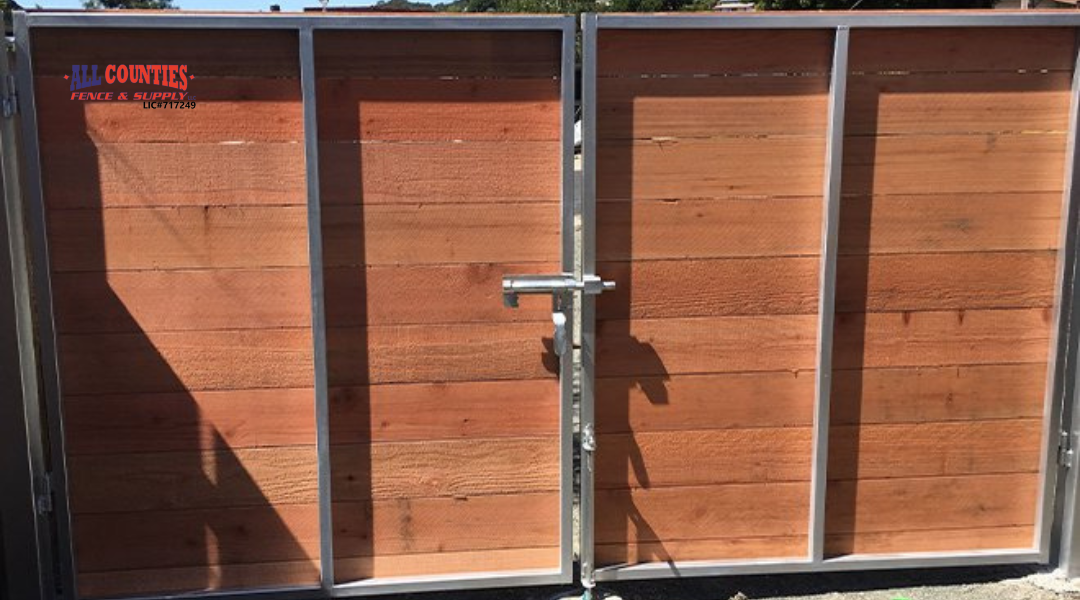
Maintaining your gate is essential for its durability and function. Regular care can prevent common issues, ensuring your gate lasts longer and looks great. Focus on cleaning, treating materials, and performing seasonal checks for optimal performance.
Regular Cleaning And Lubrication
To keep your gate in top shape, regular cleaning is crucial. Use a mild soap and water solution to remove dirt and debris. This simple step can prevent corrosion and wear.
After cleaning, apply lubricant to the hinges and locks. Aim for a silicone-based or graphite lubricant to reduce friction. This will help prevent misalignment and sticking, ensuring smooth operation.
Schedule this maintenance every few months or more often if your gate is exposed to harsh weather. A clean, well-lubricated gate will function better and last longer.
Treating Metal Gates For Rust Prevention
Metal gates are prone to rust if not cared for properly. To avoid this, inspect your gate for any signs of rust or damage.
Start by cleaning the surface to remove dirt and existing rust. Use a wire brush or sandpaper for tough spots, followed by a rust-inhibiting primer.
Next, apply a coat of weather-resistant paint specifically designed for metal. Doing this periodically will keep moisture out, reducing the chances of rust formation.
Consider doing these treatments during seasonal maintenance checks to ensure your gate stays in good condition.
Wood Gate Care: Sealing And Staining Tips
Wooden gates require special attention to maintain their appearance and strength. Regularly inspect the wood for cracks or splinters.
Cleaning the surface with a soft brush can help remove dirt and mildew. After cleaning, it’s essential to apply a sealant or stain. These products protect the wood from moisture and UV damage.
Aim to reapply the sealant annually or every few years, depending on your climate. This maintenance can help prevent warping and prolong the life of your gate.
When To Call A Professional For Gate Repair
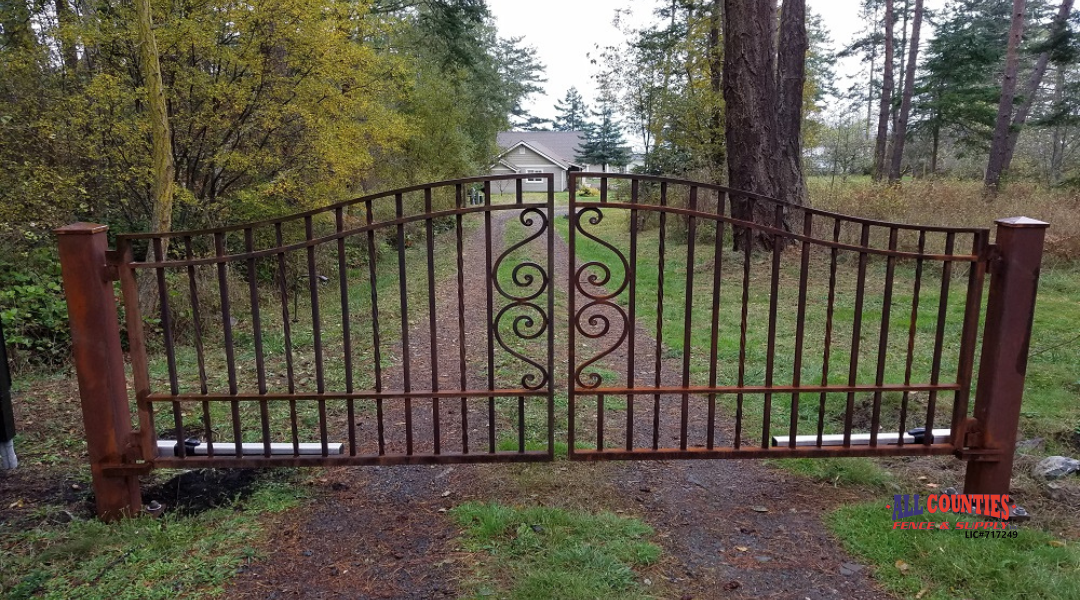
Certain gate issues require expert attention to ensure they are fixed correctly and safely. Knowing when to call a professional can save you from expensive repairs and give you peace of mind.
Complex Gate Issues Beyond DIY
If your gate has mechanical components like electronic openers or complex locking systems, it’s wise to seek professional help. These systems can be tricky to diagnose and fix without experience.
Signs you should call an expert include:
- Misalignment: If your gate does not align properly, it may require specialized tools and skills to address.
- Electrical Problems: For gates with automatic features, issues in wiring or sensors can lead to safety hazards.
- Structural Damage: Large cracks or bent frames can compromise the gate’s integrity.
Tackling these problems yourself can lead to ineffective repairs that cause further damage and higher repair costs later.
Time-Saving Reasons To Hire A Professional
You may think repairing your gate is a simple task. However, it can often consume more time than anticipated. Hiring a professional can significantly reduce the time you spend on repairs.
Consider these time-saving benefits:
- Expert Diagnosis: Professionals can quickly identify issues that might take you hours to figure out.
- Efficient Repairs: Skilled technicians have the right tools and experience to complete repairs much faster.
- Avoiding Mistakes: Missteps in DIY repairs can result in additional problems.
In the long run, hiring a professional can be a wise investment. It helps you avoid the hassle and potential high costs associated with further damage.
Expert Tips For Prolonging The Life Of Your Gate
Taking good care of your gate is essential for its longevity. By following preventative measures and choosing durable materials, you can help ensure your gate withstands various weather conditions and everyday wear.
Preventive Measures To Avoid Damage
Regular maintenance is key to keeping your gate in top shape. Start by inspecting your gate at least twice a year. Look for signs of wear, such as rust on metal fences or cracks in wooden gates.
When the weather gets colder, ensure that no ice or snow buildup occurs around your gate. This can put pressure on hinges and cause damage. Use a shovel to remove snow and salt to prevent freezing temperatures from affecting your gate’s mechanics.
Additionally, applying a weather-resistant sealant to wooden fences can help protect against rot and moisture. For metal fences, consider using a rust-resistant paint. This proactive approach will extend the lifespan of your gate.
Choosing Durable Materials For Gate Repair
Selecting the right materials for your gate is crucial. If you’re repairing a wooden fence, opt for treated wood that resists rot and pest damage. Cedar and redwood are excellent choices due to their natural resistance to moisture and insects.
For more durability, consider vinyl fences. They are resistant to fading and do not warp or crack in cold weather. This makes them ideal for areas with harsh winters.
If you prefer metal fences, look for galvanized or stainless steel options. They offer high resistance to rust and can withstand extreme conditions. By choosing the right materials, you enhance your gate’s resilience and reduce the frequency of repairs.
Conclusion
Maintaining and repairing your gate is essential for its longevity and appearance. Regular inspections can help you catch problems early.
Start with basic maintenance tasks, such as:
- Cleaning: Remove dirt and debris regularly.
- Lubricating: Apply lubricant to hinges and locks to ensure smooth operation.
- Tightening: Check screws and bolts to keep everything secure.
When it comes to repairs, make sure to:
- Assess Damage: Look for wear or rust and decide if it can be fixed or needs replacement.
- Use Quality Materials: Choose durable materials to prolong the life of your repairs.
- Seek Help When Needed: If a repair seems too complex, don’t hesitate to call a professional.
By following these tips, you can keep your gate functioning well and looking great. Staying proactive can save you time and money in the long run. Investing a little effort into your gate maintenance pays off with better performance and fewer repairs.

